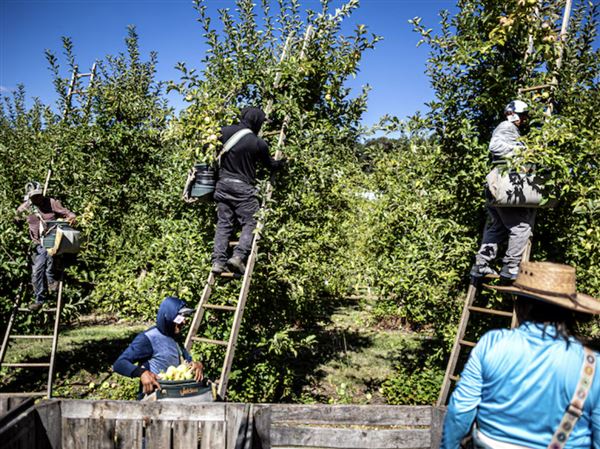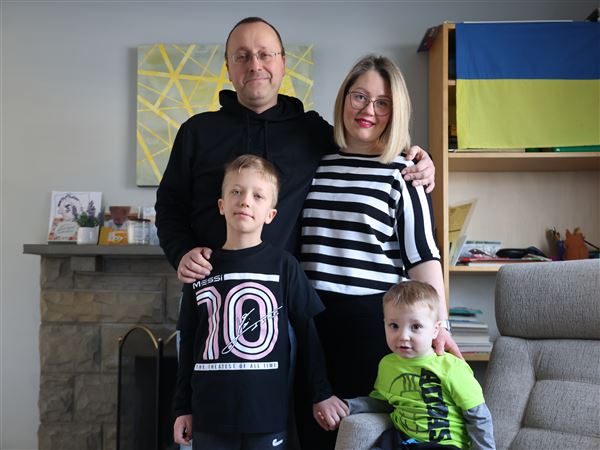Earlier this month, U.S. Citizenship and Immigration Services announced that the U.S. had reached the congressionally mandated H-1B visa cap for the 2017 fiscal year. The H-1B visa program allows U.S. employers to hire international workers, on a temporary basis, in jobs that require specialized skill sets often in the STEM fields (science, technology, engineering and math).
For the fourth consecutive year, the H-1B visa cap was reached in just five days. This means there will again be thousands of high-skilled workers turned away from our shores. Imagine how many of these individuals will start competing businesses in their home countries. Our nation’s leaders need to fix our broken immigration system, including lifting the cap on H-1B visas.
The immigration debate is often focused exclusively on the regions where recent migration has accelerated and where higher concentrations of undocumented immigrants live. While these issues are important to the overall immigration debate, the Great Lakes region has an acute need for highly skilled domestic and international talent to continue the economic renaissance occurring across our states. This is one of the reasons that the Great Lakes Metro Chambers Coalition, a group of nearly 40 chambers of commerce covering 12 states in the Great Lakes region, considers reform of immigration for highly skilled workers a key policy goal. Our chambers, and the employers we represent, believe high-skilled immigration is a critical part of the solution to closing the skilled- worker gap.
We know the battle for talent is global. Encouraging legal, high-skilled immigration is vital for growth and prosperity. Shifting demographics are depleting talent pools and jeopardizing economic competitiveness in many Great Lakes metro areas. The result: serious shortages in the replacement of advanced-manufacturing workers in the Great Lakes. Add to that, in 2015, Midwest states saw STEM job postings total more than 2.4 million, an increase of more than 50 percent from 2014. This growth is happening at a time when many of the Midwest states’ populations are stagnant and our K-12 educational systems are struggling to address STEM preparation. If the rebirth of manufacturing is to help restore the American middle class, an influx of talented, highly skilled professionals is needed. Raising the H-1B visa cap is a critical part of the solution.
The detractors of high-skilled immigration have been pushing false claims that immigrants are taking jobs from Americans. However, the data and analyses by many economists do not support this allegation.
According to the American Enterprise Institute, for every H-1B visa approved, 1.83 jobs are created for American workers. This number jumps to 2.62 jobs when looking at H-1B visa applicants with STEM degrees. Moreover, contrary to common beliefs, wages for American workers are not negatively impacted. In fact, as the Government Accountability Office has stated, STEM employment wages are growing much faster than the national average. And virtually all STEM fields have lower unemployment rates than the national average; many are at full employment or lower.
While political spin is always out there, it’s the facts that matter. And the facts show that immigration, high-skilled immigration in particular, is a positive for American economic prosperity. In the Great Lakes region, our business leaders get this. While we must continue to push for reforms to better educate and train our citizens, we must also welcome immigrants, especially those who help us close the skilled-worker gap.
Our elected officials should think about how many future American entrepreneurs earlier this month were told they are not welcome in America. Who knows if the founder of the next Google or Apple or Uber was turned away? We would rather have these highly skilled workers develop their skills here in America and in the Great Lakes region, where STEM jobs are expected to continue to grow. After the simmer of this election season has passed, our leaders need to move an immigration bill that deals with our broken system. The Great Lakes Metro Chambers Coalition stands ready to join with leaders looking to address this important issue.
Sandy K. Baruah is president and CEO of the Detroit Regional Chamber. Joseph D. Roman is president and CEO of the Greater Cleveland Partnership. Dennis Yablonsky is CEO of the Allegheny Conference on Community Development and its affiliate, the Greater Pittsburgh Chamber of Commerce.
First Published: April 28, 2016, 4:00 a.m.














